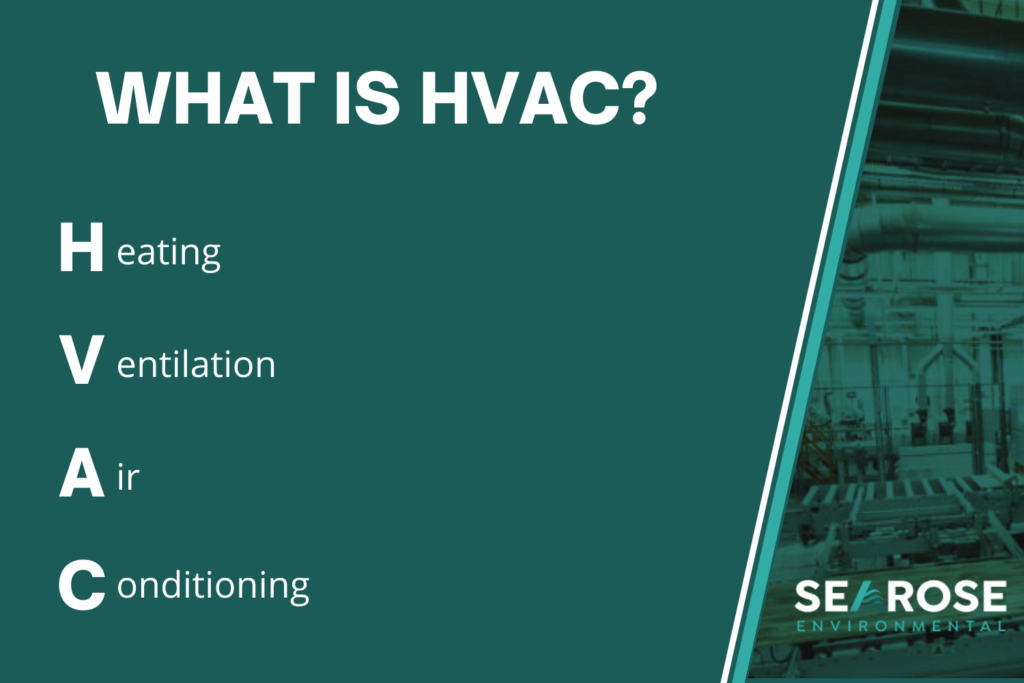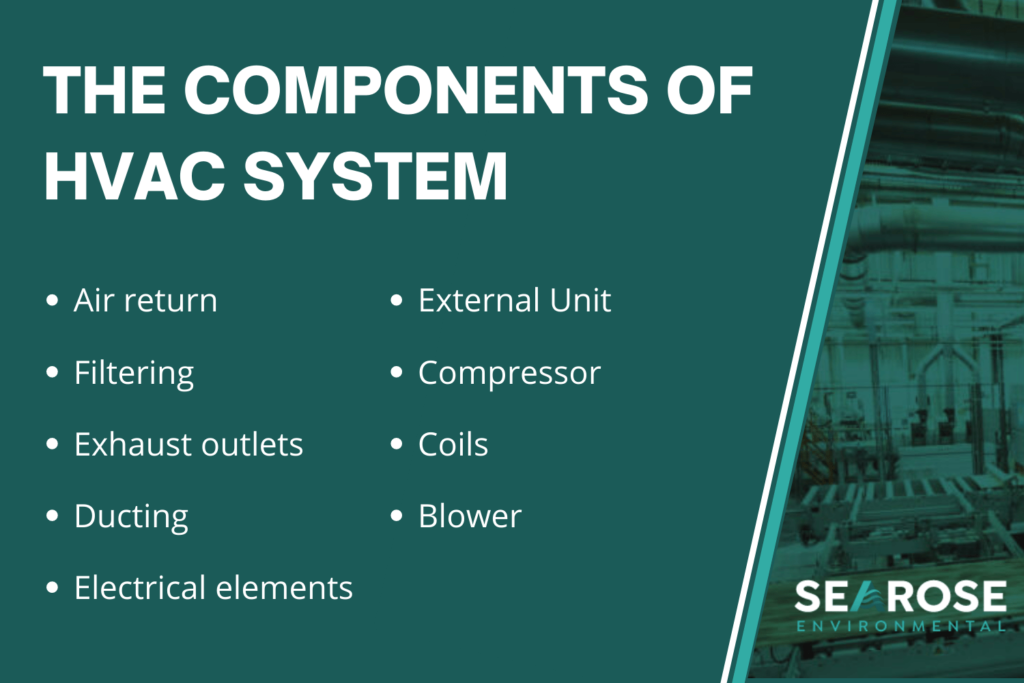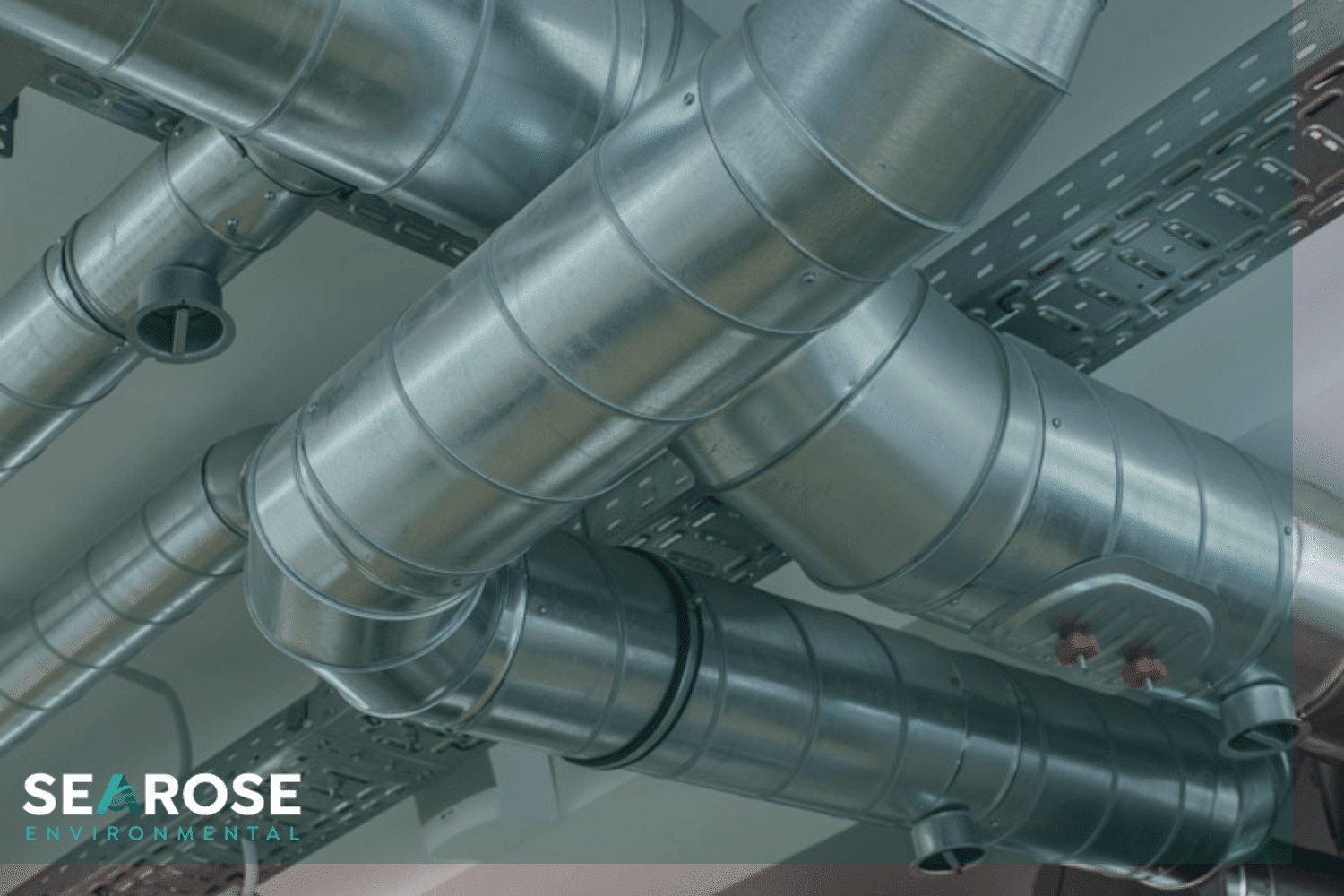Your HVAC system is the core of heating and cooling within your building. If you’ve invested in a quality HVAC system, you’ll be able to stabilise and maintain a comfortable temperature throughout both summer and winter. So, what is HVAC system? What does HVAC stand for? And how do you define HVAC systems that are commonly used in industrial, commercial and residential settings?
Searose Environmental are Brisbane’s leading HVAC specialists – providing air ducting services, flexible ducting and industrial ventilation systems across Queensland. We’re here to break down the basics of an HVAC system so that you can better understand what it is that your equipment does for your property.
What Is HVAC System?
First and foremost, if you’re wondering “what is HVAC?”, we’re going to assume you’re not an expert on air ducting, and you don’t know what the acronym stands for. So, what does HVAC stand for? If we were to define HVAC system, it starts by stating that the acronym stands for Heating, Ventilation and Air Conditioning.

When pondering “What is HVAC?” many consider the term to describe equipment that differs from their air conditioning or heating unit. In reality, an HVAC system is the overarching system – your air conditioner or heating system actually fall under the umbrella of HVAC equipment.
HVAC is a term used to refer to the various systems commonly used for moving air between indoor and outdoor areas, along with the heating and cooling of both commercial and residential buildings. This type of equipment keeps your home cool in summer and warm in winter, as well as providing a filter that cleans indoor air and maintains humidity levels.
An HVAC system covers everything from the air conditioning unit in your home to the large systems commonly used in industrial complexes and apartment buildings. In essence, a good HVAC system is designed using the principles of thermodynamics, fluid mechanics and heat transfer to provide thermal and indoor comfort.
Breaking Down HVAC
The answer of what HVAC is, comes down to more than just a system that provides warm and cool air. HVAC systems also serve to improve indoor air quality and maintain a standard of humidity. While there are various types of HVAC systems, they all rely on the same basic principles.
To answer the question of “What is HVAC?”, we’ve broken down the primary elements of the system.
Heating
The heating component of an HVAC system functions to generate heat. Heaters come in a variety of forms and can transfer heat by convection, conduction or radiation.
Some heaters are furnaces that burn materials to deliver heated air through ductwork, while other heaters generate heat from boilers that heat water for steam radiators. Electric heat, heat pumps and hydronic heating systems are also popular heating equipment choices used in commercial, industrial and residential settings.
Ventilation
Ventilation is a necessary force in all HVAC units. First, there is a source of fresh air intake either from the exteriors or within the building. From here, the process of ventilation can occur in one of two ways:
Natural ventilation is present and most buildings and occurs as air typically move in out and out windows, doors, vents and other openings. This ongoing airflow is required to replenish oxygen and remove odours, carbon dioxide and excessive moisture.
Mechanical ventilation – the V in HVAC – relies on a mechanical system to move air in and out. Traditionally, buildings have been constructed to foster natural ventilation, leaving older homes with gaps, cracks and opening doors and windows for air to pass through. However, modern construction encourages building homes that are tightly sealed, requiring the assistance of mechanical ventilation with an HVAC system.
During mechanical ventilation, once the air is brought in, it is taken in by an air handling unit where the process of manual ventilation begins. The air is filtered to remove dirt, allergens, dust and other particles. From there, it is released back out to either provide heated or cooled comfort.
Air Conditioning
Air conditioning refers to the delivery of cooling and/or humidity control for all or part of a building. Air-conditioned buildings generally have sealed windows, as open windows would work against the mechanics of air conditioning systems intended to maintain constant indoor air conditions.
The HVAC system’s air conditioning component works by drawing in fresh air from outside into the system into a mix air chamber for mixing with the space return air. The mixture air enters an indoor or outdoor heat exchanger area where the air is cooled down, then driven to the space that creates positive air pressure.
The removal of heat provides air conditioning. Heat can be removed through radiation, convection or conduction. There are various air conditioning systems used in modern construction – the important thing to remember is that any unit that conditions the air, is what is known as an air conditioner.
The three main functions of HVAC (heating, ventilation and air conditioning) are interrelated, especially when required to provide thermal comfort and a standard of indoor air quality. There are instances wherein the HVAC components may operate independently from each other. However, it’s more common for each component to work alongside the others.
What Is HVAC Equipment Used For?
HVAC equipment is generally used in both commercial and domestic environments and can be relied upon for ventilation, air distribution and adequate thermal control.
Have you ever noticed the large air conditioning units that are typically placed on the top of apartment blocks or offices? These are (the visible part of) the most are commonly used HVAC systems. Commonly used on large industrial sites, skyscrapers, apartment blocks and large interiors, these large HVAC units are an essential component of environments where health regulations require temperature and humidity to be kept at certain levels.
The Components of HVAC System
Now that you’ve got an understanding of what an HVAC system does, let’s look at the various components of an HVAC that work to provide a smooth airflow operation. There are nine main elements of an HVAC system that allow it to operate seamlessly:

- Air Return: Air return refers to the part of the system that marks the beginning of the ventilation cycle. Air return sucks in air, draws it through the filter, and then passes through the main system.
- Filtering: The filter of an HVAC system is the second component of the air return in which the air is drawn through. Filtering stops dirt, dust, allergens and other particles from circulating an indoor space.
- Exhaust Outlets: The exhaust outlets of an HVAC system provide a duct for the exhaust created by the heating system to be expelled.
- Ducting: The ducts of an HVAC system refer to the channels in which heated or cooled air passes through, to be expelled into the indoor spaces.
- Electrical Elements: The electrical elements of an HVAC system include the fan motors, compressors and devices like gas valves and solenoid valves. All of these are electrical loads – a load is a component in a circuit that converts electricity into light, heat or mechanical motion. If there is a concern within a heating or cooling system, it tends to originate in the electrical elements.
- External Unit: This is the part of the HVAC system that you’re probably aware of. A system’s outdoor or external unit houses the fan which takes in external air and provides airflow into the internal unit.
- Compressor: The compressor is part of the system’s external unit and is responsible for converting refrigerant from a gas to liquid before sending it to the coils.
- Coils: The coils refer to a part of the outdoor unit that cools the air as it passes through, with the assistance of a refrigerant.
- Blower: The blower is the component of an HVAC system that draws in warm air through the unit’s main section. The more efficiently this air moves through, the more effective this part of the system will be.
Searose Environmental HVAC Services
HVAC is a general industry term used to describe a variety of technologies that control and condition airflow. Now that we’ve gone over the basics of HVAC, you should have a better understanding of how your equipment functions.
If you’re looking to maximise the performance and efficiency of your HVAC unit, you’re in luck. Brisbane’s air ducting specialists, Searose Environmental, provide industry-leading ductwork services that can optimise your industrial or commercial set up. Our online store stocks a wide range of flexible hoses, ducting systems, modular ducting, spiral ducting, air movement devices, and air handling units.
Whether you require a new ducting system installed or require the help of an expert to repair, maintain, inspect or service your existing ducting, Searose Environmental are your guys. We specialise in HVAC and architectural ducting.
As the industry experts, the Searose Environmental team provide professional design, supply and installation solutions to suit your organisation’s needs. Our HVAC and ducting experts have both the experience and knowledge to safely handle all types of industrial, commercial and domestic operational equipment. Call us today on 1300 48 48 49 to discuss your project.
